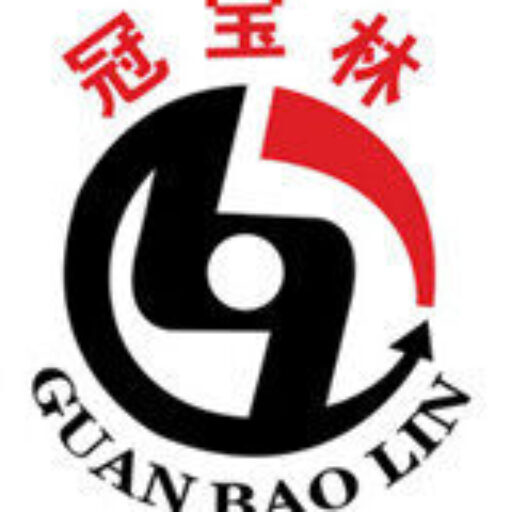Making activated Charcoal is a fascinating process that produces a versatile material widely used in water purification, air filtration, and even medicinal applications. Curious about how it’s made? This guide explores the entire journey, from selecting raw materials to creating the final activated product, while showcasing Guanbaolin Carbon Industry Ltd., a top manufacturer of activated carbon production equipment.
Outline
- Introduction to Activated Charcoal
- Why Is Activated Charcoal Important?
- Raw Materials Used in Activated Charcoal Production
- Common Sources (Wood, Coconut Shells, Coal, etc.)
- The Role of Guanbaolin Carbon Industry Ltd. in the Industry
- Step-by-Step Guide to Making Activated Charcoal
- Step 1: Selection and Preparation of Raw Materials
- Step 2: Carbonization – Turning Biomass into Charcoal
- Step 3: Activation Process – Enhancing Adsorption
- Different Activation Methods
- Physical Activation
- Chemical Activation
- Processing and Grinding into Fine Powder or Granules
- Quality Control and Testing Procedures
- Industrial vs. DIY Activated Charcoal Production
- Applications of Activated Charcoal
- Water Purification
- Air Filtration
- Medical and Pharmaceutical Uses
- Industrial Uses
- The Environmental Impact of Activated Charcoal Production
- How Guanbaolin Carbon Industry Ltd. Enhances Production Efficiency
- Innovations in Activated Carbon Manufacturing
- Common Challenges in Activated Carbon Production and Solutions
- Conclusion and Final Thoughts
- FAQs on Activated Charcoal Production

Introduction to Activated Charcoal
Activated charcoal is a processed form of carbon with an incredibly high surface area, making it excellent at adsorbing impurities. It’s widely used in water purification, air filtration, medicine, and even cosmetics.
Why Is Activated Charcoal Important?
The porous structure of activated charcoal allows it to trap toxins, making it invaluable in medical treatments, industrial processes, and environmental protection.
Raw Materials Used in Making Activated Charcoal
Activated charcoal can be made from various organic materials rich in carbon. Common sources include:
- Coconut shells – Known for producing high-quality activated charcoal.
- Wood – Widely used for industrial and medical applications.
- Coal – Produces hard, durable activated carbon.
The Role of Guanbaolin Carbon Industry Ltd. Making Activated Charcoal
Guanbaolin Carbon Industry Ltd. specializes in advanced machinery for activated charcoal production. Their equipment ensures efficiency, high yield, and superior quality, making them a top choice in the industry.
Step-by-Step Guide to Making Activated Charcoal
Step 1: Selection and Preparation of Raw Materials
The first step is choosing a carbon-rich raw material. The selected material is cleaned and dried to remove excess moisture.
Step 2: Carbonization – Turning Biomass into Charcoal
The prepared raw materials are heated in a low-oxygen environment (usually between 400°C and 700°C) to remove volatile compounds, leaving behind pure carbon.
Step 3: Activation Process – Enhancing Adsorption
This is the key step where charcoal is made “activated.”
Different Activation Methods
Physical Activation
Uses high-temperature steam or carbon dioxide to create a highly porous structure.
Chemical Activation
Involves treating the charcoal with chemicals like phosphoric acid or zinc chloride before heating. This method is typically used for industrial applications.
Processing and Grinding into Fine Powder or Granules
Once activated, the charcoal is ground into different sizes depending on its intended use.
Quality Control and Testing Procedures
Manufacturers perform adsorption tests, pore structure analysis, and purity checks to ensure high-quality activated carbon.
Industrial vs. DIY Activated Charcoal Production
While industrial production ensures consistency and efficiency, DIY methods (like using a backyard kiln) lack the precision needed for commercial applications.
Applications of Activated Charcoal
Water Purification
Activated charcoal filters contaminants from drinking water, making it safe for consumption.
Air Filtration
Used in HVAC systems, gas masks, and industrial air purifiers.
Medical and Pharmaceutical Uses
- Treats poison ingestion.
- Used in wound care.
Industrial Uses
- Gold recovery.
- Chemical purification.
The Environmental Impact of Activated Charcoal Production
Sustainable production methods and renewable resources can minimize environmental harm.
How Guanbaolin Carbon Industry Ltd. Enhances Production Efficiency
Guanbaolin provides cutting-edge machinery that maximizes output while reducing energy consumption, making the process more sustainable.
Innovations in Activated Carbon Manufacturing
- AI-powered quality control.
- Renewable raw materials.
- Advanced activation techniques.
Common Challenges in Activated Carbon Production and Solutions
- High production costs – Using efficient machinery like those from Guanbaolin can reduce costs.
- Inconsistent quality – Advanced testing ensures consistency.
Conclusion and Final Thoughts
Activated charcoal is a versatile and valuable material with a wide range of applications. With companies like Guanbaolin Carbon Industry Ltd. leading the way in production technology, the future of activated carbon manufacturing looks promising.
FAQs on Activated Charcoal Production
1. How long does it take to produce activated charcoal?
The entire process, from carbonization to activation, can take several hours to a full day, depending on the method used.
2. What is the best raw material for activated charcoal?
Coconut shells are often considered the best due to their high carbon content and superior adsorption properties.
3. Can I make activated charcoal at home?
Yes, but achieving high-quality activation requires industrial-grade equipment and precise temperature control.
4. What is the difference between activated charcoal and regular charcoal?
Activated charcoal has a much higher surface area and porosity, making it better for adsorption.
5. How does Guanbaolin Carbon Industry Ltd. contribute to activated carbon production?
They provide state-of-the-art equipment designed to enhance efficiency, reduce waste, and improve the quality of activated charcoal production.
6. Does Guanbaolin Carbon Industry Ltd. can suggest loader or carries or ease the loading process
if you are looking for heavy machinery to help you on your daily heavy works yes Hong Zun Machinery as they are the sole manufacturer of machinery
7. How Much is Activated Carbon Plant?
Try reading this it will be explained further here.
